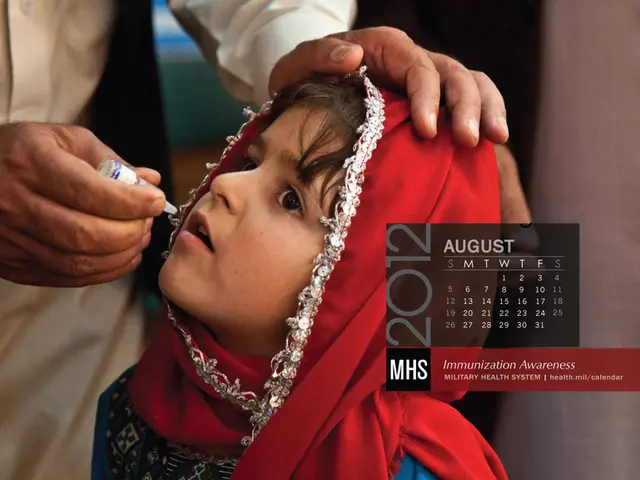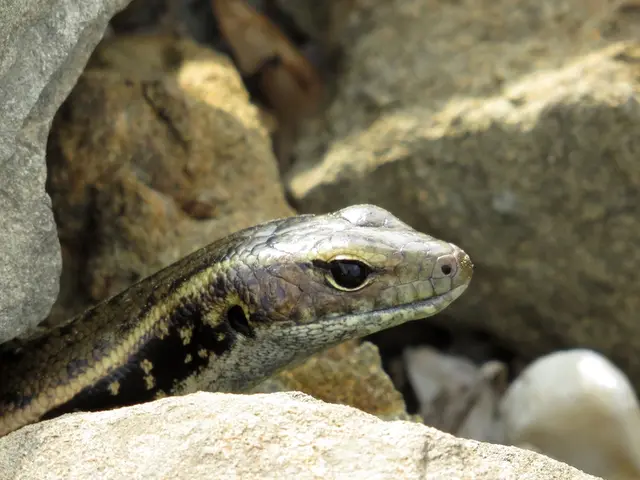Underground Heroes: The Unsung Heroes of "Rat Hole Mining" Rescue 41 Workers in India
"I could hear the workers on the other side shouting in excitement," said the 29-year-old Qureshi. "My heart raced as I removed the last stone between us."
Last month, Qureshi was one of twelve skilled laborers called by the Indian authorities to assist in rescuing 41 miners trapped in a collapsed tunnel in the northern Indian state of Uttarakhand.
For almost three weeks, the miners were cut off from the outside world, only receiving food and oxygen through a thin hose and receiving regular updates from rescue teams outside.
Engineers worked around the clock with modern machinery to create a safe passage through the shattered rock, while experts were dispatched to aid the rescue efforts. But seventeen days later, Qureshi and his colleagues successfully retrieved the men as the drilling rig could no longer be repaired just a few meters from the trapped miners.
Known locally as "Rat Hole Miners," this group of highly skilled, yet poorly paid laborers, crawl through narrow tunnels to extract coal deeply beneath the earth.
This dangerous career has been outlawed in some parts of the country, but recently, these miners have found themselves in the limelight, hailed as heroes across the nation.
"Rat tunneling mining may be illegal," commented General Lieutenant Syed Atta Hasnan, a former official of the Indian National Disaster Management Authority after the rescue, "but their talent and experience cannot be denied."
Deep in the Ranks
Workers in hazardous professions are among the most vulnerable and marginalized in India, earning them a less than flattering nickname. According to local reports, most of these workers were migrants from some of India's poorest states, earning around 5 dollars a day for their labor.
Their lean and flexible bodies are expected to squeeze into narrow cracks in mines where there is often a lack of oxygen and the risk of being buried under loose soil.
The majority of India's coal mining takes place in the northeastern state of Meghalaya, which holds over 576 million tonnes of some of the country's largest coal reserves.
The National Green Tribunal (NGT) banned rat-hole mining in Meghalaya in 2014 due to health and environmental risks, but it remains illegal in remote areas of the region.
Before the ban was enacted, an estimated 225 "Rat Hole Miners" were believed to have died between 2007 to 2014, according to Habib, founder of Impulse, an NGO that advocates for the safety of workers.

In 2018, four years after the ban was instituted, fifteen more deaths were reported when workers were trapped in illegal coal mines for two weeks.
"This number is likely to increase as other areas where this occurs are thoroughly investigated," said Habib. "I believe that these numbers will only continue to rise."
Many of those calling for rescue admit to being aware of the risks involved, but few feel that the plaudits are truly deserved.
"I always thought that one day this job would cost me my life," said Nasir Khan, one of the miners. "I never imagined that it would gain me respect."
Former Judge B.P. Katoki, who established the tribunal that banned rat-hole mining in Meghalaya, cautioned that it should not be normalized.
"This was the last attempt to save forty-one lives," said Katoki to CNN, "So, they can say that it was necessary, but that doesn't mean that they should celebrate it. It has dangerous consequences."
Forgotten Heroes
Uttarakhand's chief minister, Pushkar Singh Dhami, announced that the miners would be given 50,000 rupees (600 US dollars) as a token of appreciation. But some "Rat Hole Miners" said they were still waiting for more details about their compensation.
Despite the media attention, they claimed they had received neither gratitude nor rewards from the authorities.
Just two hours after the miners were rescued, government officials in Uttarakhand published a list of ninety individuals involved in the rescue on a WhatsApp group. The twelve "Rat Hole Miners" who put their lives at risk to create the final breakthrough were noticeably absent.
"That doesn't surprise me," said Mohammad Irshad Ansari, one of the Rat Miners. "Workers are still just workers. No matter what we do, that never changes the fact that we are poor."
CNN reached out to Uttarakhand's government for a statement on the compensation.

One of the men, Monu Kumar, said he was greeted as a hero upon his return to the northern state of Uttar Pradesh.
"Music played, we were decorated with flower garlands, and my family and neighbors distributed sweets weighing 30 kg to everyone," Kumar said.
"The people say we did so much and risked our lives, but we didn't receive any compensation for it."
"Different from anything we've ever seen"
To locate the trapped miners, the "Rat Hole Miners" had to crawl through a tube with an 80-centimeter diameter, spending hours in the confined space, lying down for several hours, and finally digging out the last twelve meters with bare hands from the rubble.
"It's different than anything we've ever seen," Khan said. "It's not just rocks, stones, or mountains; there are steel pipes, water, ropes, and wires there. We used many tools to carefully remove them."
Two "Rat Hole Miners" worked in four-hour shifts, with one chipping away at the stone and the other pulling the debris out of the tube.
"It's difficult, it's risky," Kumar said. "There's no doubt about it."
Ansari hopes to be able to save more lives in such situations, but Khans family is pressuring him to quit his job, as the risk is not worth the low wage. Despite having decades of experience in the industry, he couldn't afford to send his three children to school.
"The work is also seasonal," he said. "In the summer, the oxygen supply is problematic, and during the monsoon, the water makes the job dangerous. How can I afford to send my children to school when I only work four months a year? I don't go to school, and neither do they."
Kumar believes that the media attention will soon fade away.
"People will soon stop calling," he said. "No one will remember us."
Also Read:
After the successful rescue of 41 miners trapped in a collapsed tunnel in Uttarakhand, the Global Network for Supporting Indian "Rat Hole Miners" held a public thanksgiving ceremony for the miners. "We are grateful for the successful completion of the rescue mission by our colleagues," said Mohammad Anwar, president of the network. "This is a victory for the entire global community that cares about the safety of these people."
Source:
Additional Insights:
The working conditions and risks involved for "Rat Hole Miners" in India are extremely hazardous and unscientific. Here are the key points:
Working Conditions
- Narrow Tunnels: Rat-hole mining involves digging narrow tunnels, usually 3-4 feet high, through which workers crawl to extract coal. These tunnels can extend hundreds of feet horizontally and are often dug on hill slopes or in rectangular openings[2][4].
- Primitive Tools: Miners use primitive tools like pickaxes, shovels, and baskets to extract coal. The process is manual and labor-intensive[2].
- Depth: Vertical pits can go as deep as 400 feet, and miners often drop into these holes using a rope and bamboo ladders[2].
Risks Involved
- Environmental Hazards:
- Water Pollution: The process leads to acid mine drainage (AMD), contaminating nearby rivers and streams with heavy metals like Iron, Cadmium, and Chromium, along with sulfates. This makes the water unfit for human and aquatic life[2].
- Deforestation & Soil Erosion: Extensive forest clearing for mining results in biodiversity loss, destruction of habitats, and topsoil erosion, making the land infertile[2].
- Air Pollution: Mining operations release fine particulate matter and toxic gases, degrading air quality and impacting the health of nearby communities[2].
- Occupational Hazards:
- Severe Health Risks: Workers, mostly children, suffer from silicosis and pneumoconiosis (black lung disease) due to prolonged exposure to coal dust. Poor ventilation increases the risk of asphyxiation and poisoning from toxic gases[2].
- Frequent Accidents & Fatalities: The unscientific and unsafe mining process, lacking proper support structures, leads to frequent cave-ins, flooding, and fatalities[2].
- Social and Human Rights Hazards:
- Exploitation of Labor: Migrant workers, including children, are often forced to work in hazardous conditions without any social security, violating labor laws and fundamental human rights[2].
- Negligence of Health & Safety Standards: There is no adherence to safety norms, such as protective gear, helmets, or seasonal work restrictions, leading to a high rate of injuries and deaths among miners[2].
Persistence of Rat-Hole Mining
Despite being banned by the National Green Tribunal (NGT) in 2014 due to its hazardous impacts on human health, environment, and labor rights, rat-hole mining persists due to several factors:
- Economic Factors:
- Livelihood Dependency: A significant portion of the population in mining regions depends on rat-hole mining as their primary source of income. The high wages compared to agricultural work make it a lucrative option despite the risks[2].
- Demand for Coal: Local and regional industries rely on cheap coal sourced through rat-hole mining. The informal economy around coal extraction thrives due to weak enforcement in such areas[2].
- Governance and Legal Challenges:
- Weak Enforcement of Ban: Enforcement mechanisms remain inadequate due to a lack of manpower, corruption, vested interests, and political interference[2].
- Absence of Sustainable Alternatives: Governments have failed to provide alternative employment opportunities to the people involved in rat-hole mining, forcing them to return to mining for survival[2].
- Socio-Cultural Factors:
- Customary Land Rights: In Meghalaya, tribal communities have autonomous control over land and resources under the Sixth Schedule of the Constitution, rendering regulatory intervention difficult[2].
- Resistance from Local Stakeholders: Local elites and coal gangs resist any move to change the status quo, contributing to the continuation of rat-hole mining[2].
Measures to Address the Issue
To mitigate the impact of rat-hole mining, effective measures include:
- Strengthening Regulatory Framework:
- Strict Enforcement of NGT Ban: Collaborate with central agencies to ensure the NGT ban is strictly implemented with regular monitoring and inspections[2].
- Introduction of Scientific Mining Practices: Encourage scientifically sustainable mining practices to replace rat-hole mining[2].
- Alternative Livelihood Programs:
- Skill Development: Provide vocational training and skill development programs to enable workers to transition to safer and more sustainable employment opportunities[2].
- Agriculture and Allied Activities: Promote sustainable agri-horticulture and eco-tourism as viable economic alternatives in mining regions[2].
- Community Awareness and Empowerment:
- Awareness Campaigns: Conduct concerted awareness campaigns to educate local communities about the hazards of rat-hole mining and the benefits of sustainable development[2].
- Community Participation: Involve local communities in decision-making processes to ensure their buy-in and cooperation in implementing alternative solutions[2].
- Environmental Restoration:
- Rehabilitation of Mining Sites: Undertake reforestation and ecological restoration projects in abandoned mining areas[2].
- Water Management: Treat acid mine drainage (AMD) and ensure the availability of clean drinking water for affected communities[2].
- Tackling Child Labor and Exploitation:
- Strict Action Against Child Labor: Enforce stringent penalties on those employing child labor and ensure children are rehabilitated and provided education[2].
- Social Welfare Schemes: Implement welfare schemes in health, education, and standard of living to improve the living conditions of mining families[2].
- Leveraging Technology:
- Use of Satellite Monitoring: Deploy satellite technology and GIS mapping to detect illegal mining activities in real time[2].
- Digital Governance: Create a centralized database for monitoring mining activities, their extent, and tracking offenders[2].
- Role of Judiciary and Civil Society:
- Judicial Oversight: Establish special committees to ensure all mining activities comply with the Mines and Minerals (Development and Regulation) Act, 1957, and Mineral Concession Rules, 1960[2].
- Role of NGOs: NGOs can play a crucial role in advocacy, awareness, and rehabilitation efforts of affected communities[2].
- Disaster Management & Emergency Response:
- Rapid Response Teams: Deploy specialized rescue teams from the Indian Army, State Disaster Response Force (SDRF), and National Disaster Response Force (NDRF) swiftly in case of mine collapses, floods, or gas leaks caused by explosions[2].







